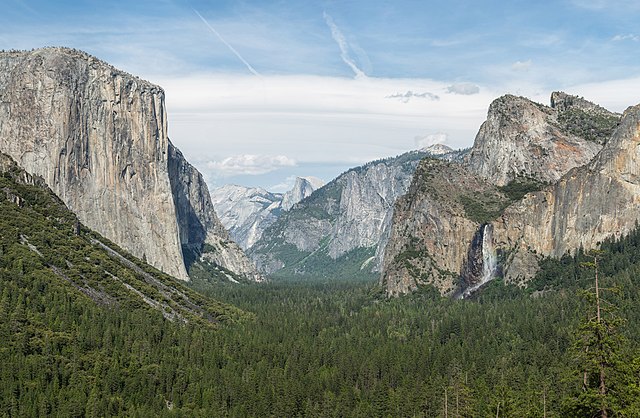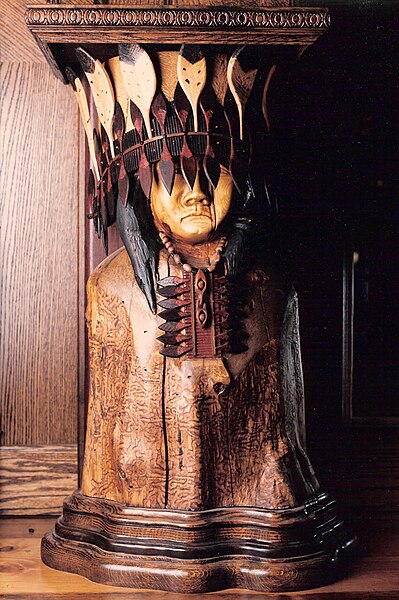Yosemite Falls is the highest waterfall in Yosemite National Park, dropping a total of 2,425 feet (739 m) from the top of the upper fall to the base of the lower fall. Located in the Sierra Nevada of California, it is a major attraction in the park, especially in late spring when the water flow is at its peak.
Upper and lower cascades of Yosemite Falls, as seen from Yosemite Valley.
All three falls
The Middle Cascades, other than the last drop, are not visible from the valley floor
Yosemite National Park is a national park in California. It is bordered on the southeast by Sierra National Forest and on the northwest by Stanislaus National Forest. The park is managed by the National Park Service and covers 759,620 acres in four counties – centered in Tuolumne and Mariposa, extending north and east to Mono and south to Madera. Designated a World Heritage Site in 1984, Yosemite is internationally recognized for its granite cliffs, waterfalls, clear streams, giant sequoia groves, lakes, mountains, meadows, glaciers, and biological diversity. Almost 95 percent of the park is designated wilderness. Yosemite is one of the largest and least fragmented habitat blocks in the Sierra Nevada.
Yosemite Valley from Tunnel View
Paiute ceremony (1872)
Lafayette Bunnell gave Yosemite Valley its name.
Sculpture of Chief Tenaya made by Sal Maccarone for the Tenaya Lodge in Yosemite National Park







